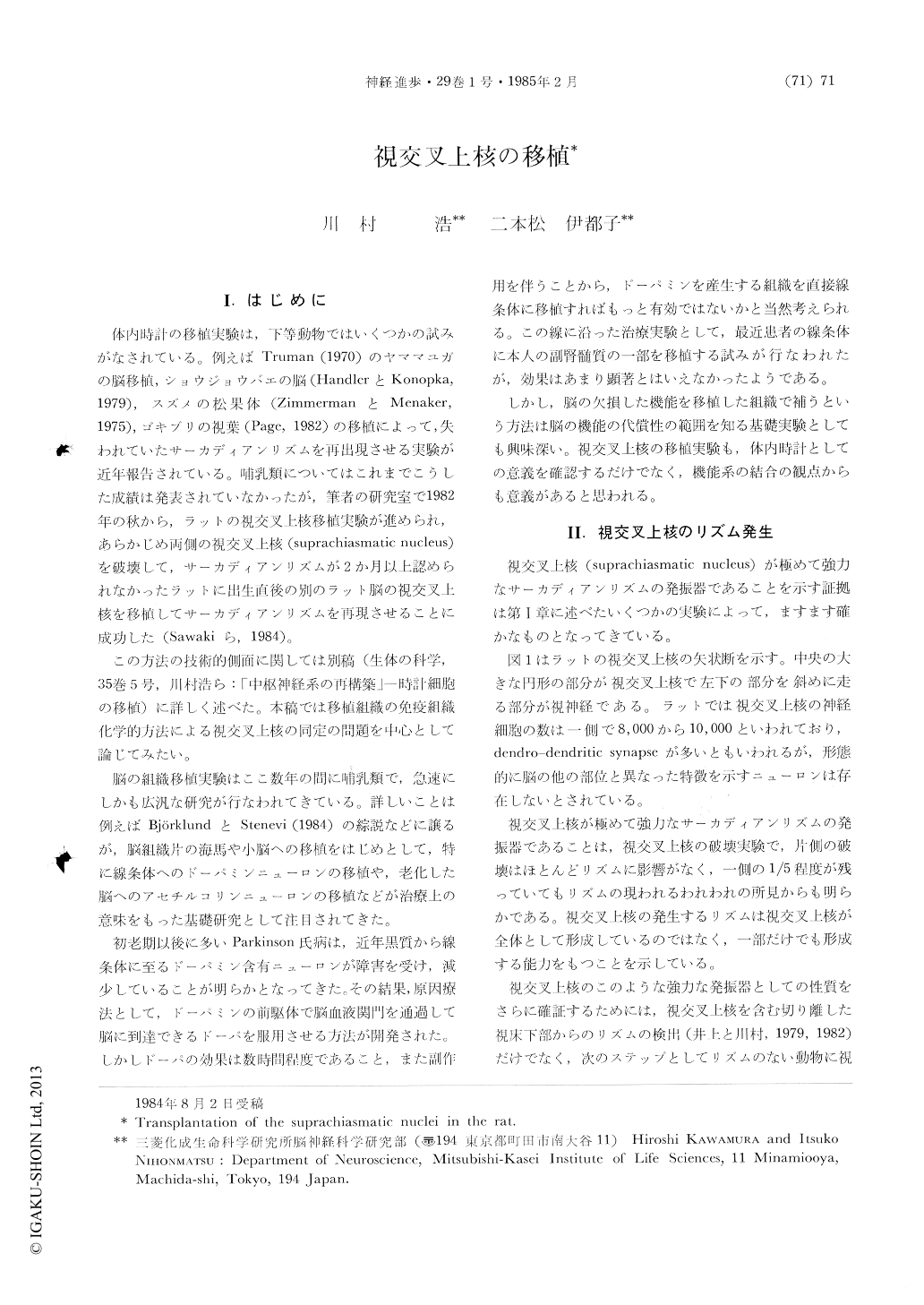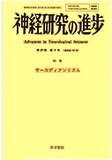Japanese
English
- 有料閲覧
- Abstract 文献概要
- 1ページ目 Look Inside
I.はじめに
体内時計の移植実験は,下等動物ではいくつかの試みがなされている。例えばTruman(1970)のヤママユガの脳移植,ショウジョウバエの脳(HandlerとKonopka,1979),スズメの松果体(ZimmermanとMenaker,1975),ゴキブリの視葉(Page,1982)の移植によって,失われていたサーカディアンリズムを再出現させる実験が近年報告されている。哺乳類についてはこれまでこうした成績は発表されていなかったが,筆者の研究室で1982年の秋から,ラットの視交叉上核移植実験が進められ,あらかじめ両側の視交叉上核(suprachiasmatic nucleus)を破壊して,サーカディアンリズムが2か月以上認められなかったラットに出生直後の別のラット脳の視交叉上核を移植してサーカディアンリズムを再現させることに成功した(Sawakiら,1984)。
この方法の技術的側面に関しては別稿(生体の科学,35巻5号,川村浩ら:「中枢神経系の再構築」―時計細胞の移植)に詳しく述べた。本稿では移植組織の免疫組織化学的方法による視交叉上核の同定の問題を中心として論じてみたい。
We have succeeded to transplant the neonatal suprachiasmatic nucleus into the third ventricle of the young adult male rat which showed arrhythmicity of wheel running activity for more than 2 months after total electrolytic lesion of the suprachiasmatic nuclei bilaterally. The resultwas first reported on "Neuroscience Research", vol. 1 (1): 67-72, 1984, by Sawaki, Y., Nihonmatsu, I. and Kawamura, H.
In the present paper we have shown three actograph data indicating the appearance of the circadian rhythm of wheel running activity 2 to 8 weeks after transplantation.

Copyright © 1985, Igaku-Shoin Ltd. All rights reserved.


